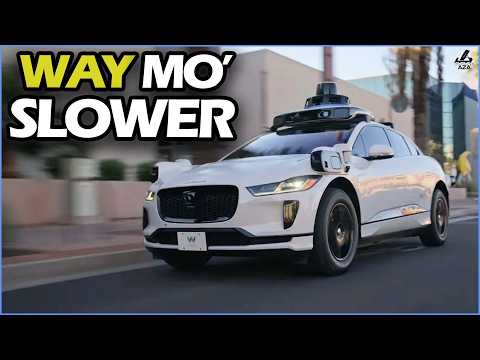Self-driving cabs are currently slower and more expensive than traditional taxis and ride-sharing services, raising concerns about their value and service quality despite potential future improvements
Questions to inspire discussion
Cost and Efficiency Comparison
🚕Q: How do Waymo's costs and trip times compare to traditional ride-sharing services?
A: According to a Forbes study of 50 rides, Waymo self-driving taxis are significantly more expensive ($950 vs $28) and take twice as long (33 min vs 16.5 min) compared to human-driven services like Uber and Lyft.
Technology and Infrastructure
🛠️Q: What contributes to Waymo's higher operational costs?
A: Waymo's expenses stem from using cars as expensive as Uber/Lyft, adding $100,000 worth of sensors and computers, and employing remote supervisors, while still in early stages of scaling and improving intervention times.
Operational Limitations
🗺️Q: What factors contribute to Waymo's longer trip times?
A: Waymo's limited routes, lack of highway driving, and operation in specific cities with extensive manual mapping lead to longer trip times, while competitors like Uber and Lyft can utilize highways for faster routes.
Future Competition
🚗Q: How might Tesla's entry into the market affect the self-driving taxi industry?
A: Tesla's potential Full Self-Driving (FSD) activation in 2025 could significantly reduce wait times and improve commute times, potentially challenging Waymo's current position in the market.
Route Efficiency
🛣️Q: How do Waymo's route choices affect trip duration?
A: Waymo's reliance on surface streets instead of highways for longer distance routes results in 120% longer average trip times (33 min vs 16.5 min) compared to Uber/Lyft, leading to both increased duration and higher costs.
Key Insights
Cost and Efficiency Comparison
🚗According to a Forbes study of 50 rides, Waymo self-driving taxis are significantly more expensive ($950 vs $28) and take twice as long (33 min vs 16.5 min) compared to human-driven ride-sharing services like Uber and Lyft.
💰Waymo's high costs stem from using cars as expensive as Uber or Lyft, adding $100,000 worth of sensors and computers, and employing remote supervisors, while still in early stages of scaling.
Operational Limitations
🛣️Waymo's limited routes and lack of highway driving contribute to longer trip times, as it only operates in specific cities with extensive manual mapping, while competitors like Uber and Lyft can utilize highways.
Future Prospects
⏱️Waymo's long wait times are attributed to being early in roll-out with limited vehicles, while Tesla's potential FSD activation in 2025 could significantly reduce wait times and improve commute efficiency.
Route Efficiency
🗺️Waymo's routes were primarily distance-based, sticking to surface streets instead of highways, leading to 120% longer trip times and higher costs compared to Uber/Lyft's more efficient highway routes.
#Robotaxi #Waymo
XMentions: @FutureAzA
Clips
-
00:00 🤖 Self-driving cabs are currently slower and more expensive than traditional taxis, raising questions about their overall value and service quality.
-
01:07 🚖 Self-driving cabs are currently slower and more expensive than human-driven ride-sharing services due to their cautious driving and route choices.
-
02:36 🚖 Self-driving cabs are currently slower and more expensive than traditional rideshare options, making them less appealing for cost and time-sensitive customers.
-
03:36 🚖 Self-driving cabs face high operational costs and require remote supervision, impacting their pricing and profitability despite potential improvements in efficiency.
-
04:31 🚖 Self-driving cabs take significantly longer and cost more than traditional ride-sharing due to their limited use of highways and longer routes.
-
06:02 🤖 Self-driving cabs currently face unfair comparisons to traditional rides due to limitations in availability, speed, and methodology.
-
07:03 🚖 Robo taxis may be slower and more expensive than human drivers, but they promise shorter wait times and safer commutes once fully operational.
- 08:35 🤖 Engage with the content by subscribing, liking, and commenting to share feedback and insights.
-------------------------------------
Duration: 0:9:17
Publication Date: 2024-11-10T20:45:52Z
WatchUrl:https://www.youtube.com/watch?v=YMDooCOXkOU
-------------------------------------

